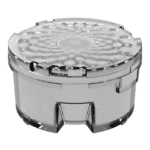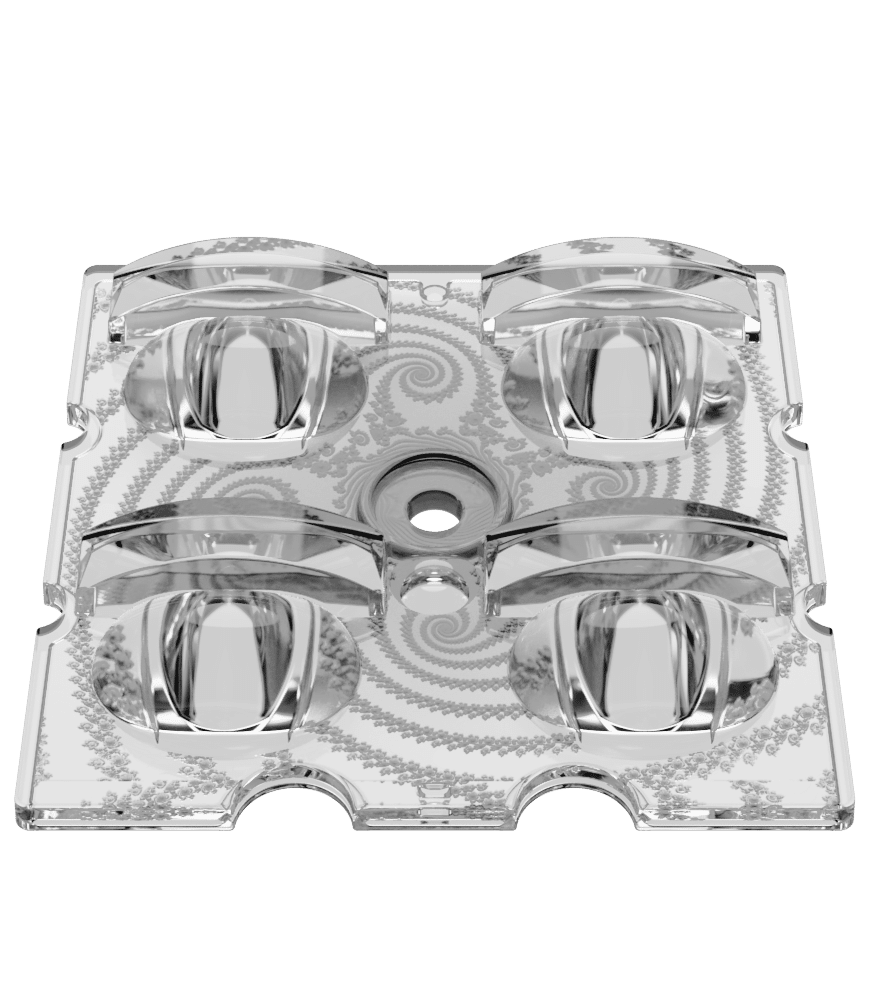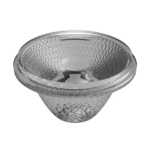Home > Technical informations about material > What is PMMA?
PHYSICAL & MECHANICAL PROPERTIES
PMMA is especially known for its exceptional optical properties. This uncrystallized polymer shows remarkable transparency (92% light transmission) in the visible range from 380 to 780 nm. The angle of total reflection on an inner surface is 41 to 42° (which allows it to be used for making light “conductors”, fiber optic filament …). Its index of refraction (for λ= 587.6 nm helium) is 1.491, which makes it a material suitable for manufacturing optical products.
PMMA is an uncrystallized polymer whose vitreous transition temperature ranges from 110 up to 135°C, i.e. at ambient temperature it is hard, rigid, and brittle with little elongation. PMMA is hygroscopic and, under extreme conditions, the water absorbed will act as a plasticizer and will modify the properties of the material. Its creep is fairly limited. When critical stress is exceeded, PMMA is subject to crazing. This phenomenon is even accentuated in the presence of corrosive agents (alcohol, gasoline …). Resistance to shock is relatively low and the polymer is brittle. This resistance can be improved by adding an anti-shock agent. PMMA resists scratching to a good degree under normal conditions of use. However, when cleaned frequently or used in a dusty environment, it could be scratched. PMMAs are easily polished.
CHEMICAL PROPERTIES
PMMA is tasteless and odorless and can, in certain cases, be recognized as being suitable for use with food. Up to 60°C, PMMA resists fairly well organic acids and diluted minerals as well as diluted alkaline solutions, but it is attacked by the common products on the list in the table. Its resistance to diminishing light transmission due to aging is very good.
- Acetone
- Alcohol
- Ethyl alcohol
- Ammonia (liquid)
- Benzene
- Aircraft fuel
- Liquid chlorine
- Chloroform
- Cyclohexane
- Hydrogen peroxide
- Turpentine
- Hydrocarbon
- Methanol (30%)
- Naphtha
- Nitrobenzene
- Petroleum
- Phenol
- Trichloroethylene
ELECTRICAL PROPERTIES
The electrical properties can be sharply affected by the absorption of humidity. Its resistance to arcing is excellent. PMMA is electrostatic which can spoil its appearance (attraction of dust). This drawback can be corrected by using ant-static products.
THERMAL PROPERTIES
PMMA is combustible and burns without producing an excessive amount of smoke (UL 94 HB). Its retraction when molded is small (0.4 to 0.7%) as for uncrystallized polymers. As its coefficient of linear expansion is very different from that of metals and its elasticity low, it is not advisable to use metal inserts in a part made of injected PMMA. The maximum operating temperature is low (< 85° C). Printing and marking properties: PMMA is suitable for both vacuum-applied metallization and silk-screening.
IMPLEMENTATION PROPERTIES
Injection
The high viscosity of PMMA in the melted state requires high injection pressures (up to 1500 bars). Machining: The machining of PMMA is easy provided that shock and overheating is avoided.
Gluing
As solvent glues release stresses, parts must be annealed (2 to 3 hrs at 80°C).
PMMA is easily glued either with pure solvents (chloroform) or with PMMA dissolved in a solvent.
Welding
PMMA can be readily welded but appearance and solidity are not as good as with gluing. Welding is limited to high-frequency, hot-gas and ultrasonic welding. PMMA shows good dimensional stability and limited retraction due to its uncrystallized structure.
Our products injected in PMMA
Material recommended by our engineering department and regularly used in production.




